The Purgatory of St. Patrick, Pedro Calderón de la Barca [i read a book TXT] 📗
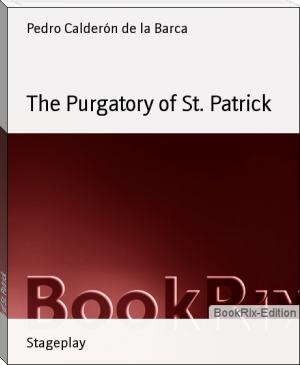
- Author: Pedro Calderón de la Barca
Book online «The Purgatory of St. Patrick, Pedro Calderón de la Barca [i read a book TXT] 📗». Author Pedro Calderón de la Barca
these words by Messingham, who also alludes to him more fully in his preface. 'What you shall find under the letter C,' says Messingham, 'is borrowed from Mathew Paris, an English Benedictine Monk, who had from his youth consecrated himself to a Monastic life, and polish'd most excellent talents of nature with exquisite Arts and Sciences, and adorn'd the same with all Christian virtues; being an Handicraft, a Writer, a good Painter, a fine Poet, an acute Logician, a solid Divine; and (which is much more valuable) pure in his Manners, bright in the innocence of his life, simple and candid. Pitseus, upon the year 1259, in which the said Mathew died, gives him a great many more encomiums, which for brevity sake I hear omit.'
The remaining half of 'Mateo Rodulfo' turns out to be Ranulphus or Ralph, Higden, the Monk of Chester, whose Polychronicon is quoted both by Messingham and Montalvan. The 'Domiciano' of the next line, which is 'Dominicano' in Montalvan, has so completely got rid of the name to which it belongs, that without the aid of Calderon's authorities, Messingham and Montalvan, it would be impossible to know who was meant. In Messingham the reference is to 'Jacobus Januensis, the Dominican, in the Life of St. Patrick,' and in Montalvan to 'Jacobo Januense, o Genuense, Dominicano.' The person thus disguised is the famous Jacobus de Voragine, the Dominican, author of 'The Golden Legend,' who was Bishop of Genoa in 1292, and died at a very advanced age in 1298. Of the 'Legenda Aurea', the fiftieth chapter is devoted to St. Patrick.
'Membrosio' is called 'Mombrisio' in Montalvan, and 'Mombrusius' in Messingham. Correctly it was neither. The writer referred to is 'Boninus Mombritius', a fine copy of whose 'Sanctuarium' is in the British Museum. At fol. 188, t. ii, there is a full account of the Purgatory, the name of the adventurous visitor being 'Nicolaus'. Of Mombritius, whom he calls Bonin Mombrice, the same writer (Baillet), from whom I have already quoted, says:-
"Cet homme peu connu d'ailleurs etoit Milanois de naissance, conseiller on fils de conseiller au senat de Milan; il vivoit du tems de Galeas Marie, duc de Milan, qui fut tue l'an 1476, et du Pape Sixte IV., qui mourut en 1484. Il s'etoit deja fait regarder comme grammairien, poete, orateur et philosopohe par divers ouvrages, mais aucun ne lui fit tant d'honneur que son 'Sanctuaire', qui est le titre qu'il donna a son recueil d'actes des Saints dedie a Simonete, secretaire des ducs de Milan." - 'Discours', p. lvii.
'Marco Marulo' is Marcus Marulus, Cap. xiv., Lib. 6, of whose work, "De religiose vivendi institutione per exempla," is entitled "De revelationibus infernalium poenarum." - 'Apul Sanctam Coloniam. Anno M.D.XXXI.
In this there is an account of a certain Irish monk, "cui Petro nomen fuit," who appears to have entered the Purgatory in vision. This is probably the passage which Messingham and Montalvan quote, though a different reference is given.
'Maurolicus Siculus', who follows next in Messingham and Montalvan, is omitted by Calderon.
"David Roto, y el prudente Primado de toda Hibernia," are one and the same person. This was the famous David Rothe, Bishop of Ossory, so intimately connected in 1642 with the Confederation of Kilkenny, of which an excellent history has been written by the Rev. Charles Meehan, M.R.I.A. The epithet "prudente" seems to have been a happy condensation of the many terms of encomium lavished upon this celebrated man by Messingham. Alluding again to his classification of his authorities under the first four letters of the alphabet, Messingham says:-
"Whatever then you shall find written under the letter A, until you come to the next letter, is taken from the Right Reverend Father David Roth, Lord Bishop of Ossory, and Vice Primate of all Ireland, a Man excellently well read in all parts of literature, an eloquent Rhetorician, a subtle Philosopher, a profound Divine, a celebrated Historian, a zealous chastizer of Vice, a steady Defender of Ecclesiastical Liberty, a constant Assertor of the Privileges of his Country, most devoutly compassionate upon the calamities of his Nation, a diligent Promoter of Peace and Unity among the Clergy, and, for that end, instituted the Congregation commonly called Pacifick, in the year 1620, which has, with no little fruit and advantage to the Clergy, spread itself over all the Kingdom, - a Man, in fine, who has left to Posterity many rare Monuments of his excellent talents, the Catalogue of which I shall not here, for good reasons, insert, but hope for more soon from him."
"Belarmino," "Beda." Cardinal Bellarmin and Venerable Bede are too well known to require any observations.
"Serpi, Fray Dimas," cut into two lines, with the names transposed, mean 'Fr. Dimas Serpi', one of whose works ('Aprodixis Sanctitatis, etc', Romae, M.DC. IX.), though not the one referred to by Messingham, is in the British Museum. In Montalvan the marginal note gives, "Lib. de Purgatorio, cap. 26," as the reference. The German translator of this drama (Brunn, 1824), misled by the punctuation of the original, treats Dimas Serpi as two persons.
"Jacob Solino," the next authority for the legend, is perhaps the most perplexing in the list. Like twin stars that seem one to the naked eye, but resolve themselves into two beneath the telescope, so the single author of the printed text of Calderon appears distinct persons in the pages of Montalvan. He gives them thus: - "Jacobo," "Solino," with a separate reference to each. Thus to "Jacobo," the marginal reference is, "In sua historia Orientale;" and to "Solino," "cap. 35," without the name of the work.
From Messingham we at once learn who the former writer was. He calls him in one place "Jacobus de Vitriaco," and in another more briefly, "Vitriacus." The passage referred to in the marginal note of Montalvan is given thus:-
"Further, Jacobus de Vitriaco, in his History of the East, chap. 92, writes thus concerning this cave:- 'There is a certain Place in Ireland, call'd St. Patrick's Purgatory, into which whosoever enters, except he be truly penitent and contrite in Heart, is snatched away by Devils, and never returns. But he that with true contrition confesseth his sins, and goes in there, tho' the Devils vex and torture him, by Fire and Water, and many other Torments, yet is he purged of all his sins: Now they that are thus purged, and return, are never more seen to laugh or play; or to take pleasure in any thing in this World, but constantly weeping and sighing, forget the things that are behind, and stretch forward to the things that are before them.' - A Brief History of St. Patrick's Purgatory, Paris, 1718, pp. 9, 10.
"Solino," who is so strangely united by Calderon's printer to "Jacob," presents some difficulty. In Messingham's list of authorities this name does not appear. The first French translator of Montalvan (Bruxelles, 1637) merely gives the Latin form of the name, "Solinus." The second French translator, Bouillon, in his 'Histoire de la vie et du Purgatoire de S. Patrice' (Troyes, 1642), turns both names into French, thus, "Jacques Solin, en son Histoire Orientale, chap. 26." This is doubly a mistake. The 'Histoire Orientale' is the work of Vitriacus, as already pointed out; and "chap. 26" refers not to that work, but to some unnamed writing of "Solino."
Of course the first name that suggests itself, as the author alluded to, is that of Caius Julius Solinus. The latest date assigned as the period when this celebrated writer flourished is A.D. 238 - that is, about 135 years before the birth of St. Patrick. To quote him as an authority on the subject of St. Patrick's Purgatory would therefore be a more absurd anachronism than any that has been pointed out in this curious list. This difficulty appeared to me so strong, that for a while I was led to believe that "Solino" was but a corrupted Spanish form of "Joceline," or "Joscelino," as it is sometimes given, whose 'Life of St. Patrick', written in the twelfth century, supplies all the incidents of St. Patrick's early life recorded by Montalvan and Calderon. He is also frequently referred to by Messingham. But further reflection convinces me that the writer alluded to was in reality the celebrated Latin author of the third century already mentioned, Caius Julius Solinus.
Solinus has of course no allusion to St. Patrick's Purgatory; but in his celebrated work, 'Polyhistor', compiled, it is thought, chiefly from Pliny's Natural History, he has a remarkable chapter on Ireland. Some of his statements are doubtful, and all are very curious; one of them at least depriving St. Patrick, by anticipation, of one of his most famous miracles. This is the banishment of the serpents, which it appears was first mentioned by Jocelin in the twelfth century. It is expressly stated by Solinus, who wrote in the third century, that in Ireland "There are no snakes and few byrdes," to use the language of the old English translator, Arthur Golding. This statement of the previous exemption of Ireland from venomous reptiles was warmly disputed by Dr. David Rothe, the Bishop of Ossory, early in the seventeenth century. It will be remembered that "David Roto" has already been quoted as an authority on the subject of St. Patrick's Purgatory, and it is his collateral controversy with Solinus that probably led Montalvan, and subsequently Calderon, to suppose that Solinus had in some way alluded to that legend. A valuable 'Life of St. Patrick', by P. Lynch (Dublin, 1828), contains many allusions to this subject, of which the following may be given as an example.
"The objections which Doctor Roth raised to the testimony of Solinus have as slender a foundation in reason. For Solinus (saith he) not only mentions thisexemption of Ireland from venomous creatures, but says further, that in Ireland there are few birds, and no bees; and therefore concludes, that as he is mistaken in these latter particulars, so he is not to be believed in the former,"- p. 42.
The author of this Life of St. Patrick goes on to say that Solinus may have been perfectly accurate in these statements. That other writers have alluded to the time when bees were first introduced into Ireland, and that the migration of some birds thither, among others the magpie, took place at a comparatively modern period. He does not add, however, that Solinus states that the very dust of Ireland was so distasteful to the bees, where they are now as much at home as in Hymettus, that if it is scattered about their hives even in another country they abandon their combs. Thus writes quaint Arthur Golding:-
"There is not any Bee among them, and if a man bring of the dust of the stones from thence, and strew them among Bee-hyves, the swarme forsake ye combes."
Another misstatement of Solinus may be pointed out. He says:-
"The sea that is betweene Ireland and Britayne, being full of shallows and rough all the yeere long, cannot be sayled but a few dayes in the summer time."
With the following picturesque passage referring to the warlike training of their children by the Irish, as recorded by a Roman writer in the third century of the Christian era, we take leave of Solinus, who we have no doubt was the author referred to by Montalvan and Calderon under the name of "Solino:"-
"If a woman be delivered of a man childe, she layes his first meate upon her husband's sworde, and putting it softly to
The remaining half of 'Mateo Rodulfo' turns out to be Ranulphus or Ralph, Higden, the Monk of Chester, whose Polychronicon is quoted both by Messingham and Montalvan. The 'Domiciano' of the next line, which is 'Dominicano' in Montalvan, has so completely got rid of the name to which it belongs, that without the aid of Calderon's authorities, Messingham and Montalvan, it would be impossible to know who was meant. In Messingham the reference is to 'Jacobus Januensis, the Dominican, in the Life of St. Patrick,' and in Montalvan to 'Jacobo Januense, o Genuense, Dominicano.' The person thus disguised is the famous Jacobus de Voragine, the Dominican, author of 'The Golden Legend,' who was Bishop of Genoa in 1292, and died at a very advanced age in 1298. Of the 'Legenda Aurea', the fiftieth chapter is devoted to St. Patrick.
'Membrosio' is called 'Mombrisio' in Montalvan, and 'Mombrusius' in Messingham. Correctly it was neither. The writer referred to is 'Boninus Mombritius', a fine copy of whose 'Sanctuarium' is in the British Museum. At fol. 188, t. ii, there is a full account of the Purgatory, the name of the adventurous visitor being 'Nicolaus'. Of Mombritius, whom he calls Bonin Mombrice, the same writer (Baillet), from whom I have already quoted, says:-
"Cet homme peu connu d'ailleurs etoit Milanois de naissance, conseiller on fils de conseiller au senat de Milan; il vivoit du tems de Galeas Marie, duc de Milan, qui fut tue l'an 1476, et du Pape Sixte IV., qui mourut en 1484. Il s'etoit deja fait regarder comme grammairien, poete, orateur et philosopohe par divers ouvrages, mais aucun ne lui fit tant d'honneur que son 'Sanctuaire', qui est le titre qu'il donna a son recueil d'actes des Saints dedie a Simonete, secretaire des ducs de Milan." - 'Discours', p. lvii.
'Marco Marulo' is Marcus Marulus, Cap. xiv., Lib. 6, of whose work, "De religiose vivendi institutione per exempla," is entitled "De revelationibus infernalium poenarum." - 'Apul Sanctam Coloniam. Anno M.D.XXXI.
In this there is an account of a certain Irish monk, "cui Petro nomen fuit," who appears to have entered the Purgatory in vision. This is probably the passage which Messingham and Montalvan quote, though a different reference is given.
'Maurolicus Siculus', who follows next in Messingham and Montalvan, is omitted by Calderon.
"David Roto, y el prudente Primado de toda Hibernia," are one and the same person. This was the famous David Rothe, Bishop of Ossory, so intimately connected in 1642 with the Confederation of Kilkenny, of which an excellent history has been written by the Rev. Charles Meehan, M.R.I.A. The epithet "prudente" seems to have been a happy condensation of the many terms of encomium lavished upon this celebrated man by Messingham. Alluding again to his classification of his authorities under the first four letters of the alphabet, Messingham says:-
"Whatever then you shall find written under the letter A, until you come to the next letter, is taken from the Right Reverend Father David Roth, Lord Bishop of Ossory, and Vice Primate of all Ireland, a Man excellently well read in all parts of literature, an eloquent Rhetorician, a subtle Philosopher, a profound Divine, a celebrated Historian, a zealous chastizer of Vice, a steady Defender of Ecclesiastical Liberty, a constant Assertor of the Privileges of his Country, most devoutly compassionate upon the calamities of his Nation, a diligent Promoter of Peace and Unity among the Clergy, and, for that end, instituted the Congregation commonly called Pacifick, in the year 1620, which has, with no little fruit and advantage to the Clergy, spread itself over all the Kingdom, - a Man, in fine, who has left to Posterity many rare Monuments of his excellent talents, the Catalogue of which I shall not here, for good reasons, insert, but hope for more soon from him."
"Belarmino," "Beda." Cardinal Bellarmin and Venerable Bede are too well known to require any observations.
"Serpi, Fray Dimas," cut into two lines, with the names transposed, mean 'Fr. Dimas Serpi', one of whose works ('Aprodixis Sanctitatis, etc', Romae, M.DC. IX.), though not the one referred to by Messingham, is in the British Museum. In Montalvan the marginal note gives, "Lib. de Purgatorio, cap. 26," as the reference. The German translator of this drama (Brunn, 1824), misled by the punctuation of the original, treats Dimas Serpi as two persons.
"Jacob Solino," the next authority for the legend, is perhaps the most perplexing in the list. Like twin stars that seem one to the naked eye, but resolve themselves into two beneath the telescope, so the single author of the printed text of Calderon appears distinct persons in the pages of Montalvan. He gives them thus: - "Jacobo," "Solino," with a separate reference to each. Thus to "Jacobo," the marginal reference is, "In sua historia Orientale;" and to "Solino," "cap. 35," without the name of the work.
From Messingham we at once learn who the former writer was. He calls him in one place "Jacobus de Vitriaco," and in another more briefly, "Vitriacus." The passage referred to in the marginal note of Montalvan is given thus:-
"Further, Jacobus de Vitriaco, in his History of the East, chap. 92, writes thus concerning this cave:- 'There is a certain Place in Ireland, call'd St. Patrick's Purgatory, into which whosoever enters, except he be truly penitent and contrite in Heart, is snatched away by Devils, and never returns. But he that with true contrition confesseth his sins, and goes in there, tho' the Devils vex and torture him, by Fire and Water, and many other Torments, yet is he purged of all his sins: Now they that are thus purged, and return, are never more seen to laugh or play; or to take pleasure in any thing in this World, but constantly weeping and sighing, forget the things that are behind, and stretch forward to the things that are before them.' - A Brief History of St. Patrick's Purgatory, Paris, 1718, pp. 9, 10.
"Solino," who is so strangely united by Calderon's printer to "Jacob," presents some difficulty. In Messingham's list of authorities this name does not appear. The first French translator of Montalvan (Bruxelles, 1637) merely gives the Latin form of the name, "Solinus." The second French translator, Bouillon, in his 'Histoire de la vie et du Purgatoire de S. Patrice' (Troyes, 1642), turns both names into French, thus, "Jacques Solin, en son Histoire Orientale, chap. 26." This is doubly a mistake. The 'Histoire Orientale' is the work of Vitriacus, as already pointed out; and "chap. 26" refers not to that work, but to some unnamed writing of "Solino."
Of course the first name that suggests itself, as the author alluded to, is that of Caius Julius Solinus. The latest date assigned as the period when this celebrated writer flourished is A.D. 238 - that is, about 135 years before the birth of St. Patrick. To quote him as an authority on the subject of St. Patrick's Purgatory would therefore be a more absurd anachronism than any that has been pointed out in this curious list. This difficulty appeared to me so strong, that for a while I was led to believe that "Solino" was but a corrupted Spanish form of "Joceline," or "Joscelino," as it is sometimes given, whose 'Life of St. Patrick', written in the twelfth century, supplies all the incidents of St. Patrick's early life recorded by Montalvan and Calderon. He is also frequently referred to by Messingham. But further reflection convinces me that the writer alluded to was in reality the celebrated Latin author of the third century already mentioned, Caius Julius Solinus.
Solinus has of course no allusion to St. Patrick's Purgatory; but in his celebrated work, 'Polyhistor', compiled, it is thought, chiefly from Pliny's Natural History, he has a remarkable chapter on Ireland. Some of his statements are doubtful, and all are very curious; one of them at least depriving St. Patrick, by anticipation, of one of his most famous miracles. This is the banishment of the serpents, which it appears was first mentioned by Jocelin in the twelfth century. It is expressly stated by Solinus, who wrote in the third century, that in Ireland "There are no snakes and few byrdes," to use the language of the old English translator, Arthur Golding. This statement of the previous exemption of Ireland from venomous reptiles was warmly disputed by Dr. David Rothe, the Bishop of Ossory, early in the seventeenth century. It will be remembered that "David Roto" has already been quoted as an authority on the subject of St. Patrick's Purgatory, and it is his collateral controversy with Solinus that probably led Montalvan, and subsequently Calderon, to suppose that Solinus had in some way alluded to that legend. A valuable 'Life of St. Patrick', by P. Lynch (Dublin, 1828), contains many allusions to this subject, of which the following may be given as an example.
"The objections which Doctor Roth raised to the testimony of Solinus have as slender a foundation in reason. For Solinus (saith he) not only mentions thisexemption of Ireland from venomous creatures, but says further, that in Ireland there are few birds, and no bees; and therefore concludes, that as he is mistaken in these latter particulars, so he is not to be believed in the former,"- p. 42.
The author of this Life of St. Patrick goes on to say that Solinus may have been perfectly accurate in these statements. That other writers have alluded to the time when bees were first introduced into Ireland, and that the migration of some birds thither, among others the magpie, took place at a comparatively modern period. He does not add, however, that Solinus states that the very dust of Ireland was so distasteful to the bees, where they are now as much at home as in Hymettus, that if it is scattered about their hives even in another country they abandon their combs. Thus writes quaint Arthur Golding:-
"There is not any Bee among them, and if a man bring of the dust of the stones from thence, and strew them among Bee-hyves, the swarme forsake ye combes."
Another misstatement of Solinus may be pointed out. He says:-
"The sea that is betweene Ireland and Britayne, being full of shallows and rough all the yeere long, cannot be sayled but a few dayes in the summer time."
With the following picturesque passage referring to the warlike training of their children by the Irish, as recorded by a Roman writer in the third century of the Christian era, we take leave of Solinus, who we have no doubt was the author referred to by Montalvan and Calderon under the name of "Solino:"-
"If a woman be delivered of a man childe, she layes his first meate upon her husband's sworde, and putting it softly to
Free e-book «The Purgatory of St. Patrick, Pedro Calderón de la Barca [i read a book TXT] 📗» - read online now
Similar e-books:

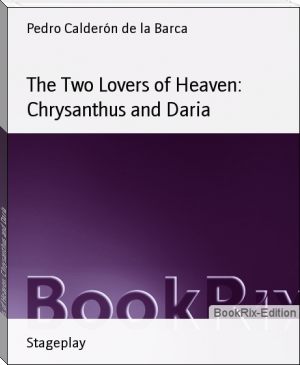
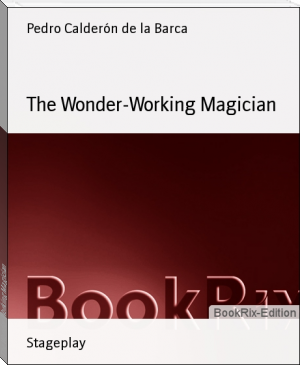
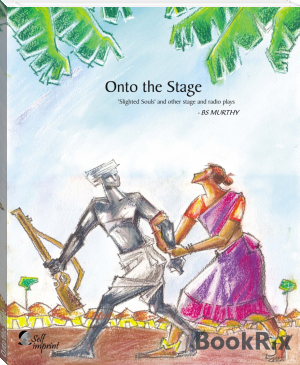
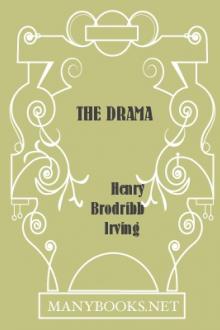
Comments (0)